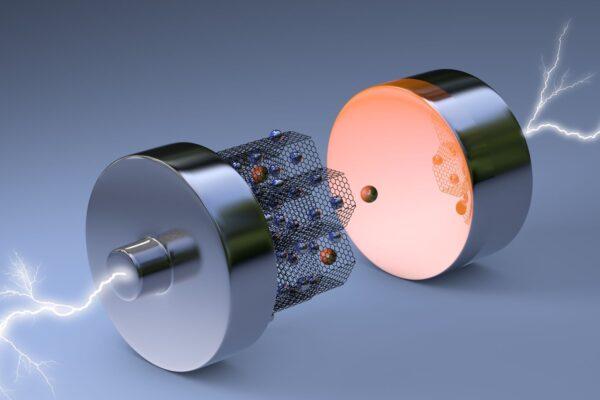Vertically Aligned Electrodes May Improve Battery Charging Times by 500%
For AAM, Vertical May Not Just Be for Take Off, It Could Be Good for Electrode Alignment Too

The linchpin of eVTOL transportation’s commercial success (read “profitability”) fundamentally lies within that lowercase “e”– the electric part of the acronym. But, one of the challenges eVTOL developers and manufacturers face is their ability to quickly and efficiently keep their lithium-ion powered vehicles sufficiently charged to keep them aloft.
The Challenge of Keeping eVTOLs Charged
The ideas currently under consideration include swapping out spent lithium-ion batteries for fresh batteries while the aircraft are on the ground deplaning arriving passengers and preparing for, and boarding, departing passengers at the vertiport. That option is time-consuming and expensive.
A team of researchers guided by Professor Guihua Yu at University of Texas at Austin’s Walker Department of Mechanical Engineering and Texas Materials Institute and led by UT Austin graduate student, Zhengyu Ju, think they may have found a viable, cost-effective solution.
Vertical Electrode Architecture Means Faster Charging
Working with others from UT Austin, including Xiao Xu, Xiao Zhang, and Kasun U. Raigama, as well as scientists from the State University of New York at Stony Brook/Brookhaven National Laboratory, Steven T. King, Kenneth J. Takeuchi, Amy C. Marschilok, Lei Wang, and Esther S. Takeuchi, modified the electrode architecture used. By realigning the electrodes from a horizontal to a vertical position, they recharged a vertical thick electrode to 50 percent capacity in 30 minutes. For control purposes, a horizontal electrode required 2 hours and 30 minutes to achieve the same level of charge.
“Two-dimensional materials are commonly believed as a promising candidate for high-rate energy storage applications because it only needs to be several nanometers thick for rapid charge transport,” Professor Yu explained. “However, for thick-electrode-design-based next-generation, high-energy batteries, the restacking of nanosheets as building blocks can cause significant bottlenecks in charge transport, leading to difficulty in achieving both high energy and fast charging.”
Zhengyu Ju, the graduate student leading Yu’s research group, explained further, “Our electrode shows superior electrochemical performance partially due to the high mechanical strength, high electrical conductivity, and facilitated lithium-ion transport thanks to the unique architecture we designed.”
Engineering this new type of electrode for lithium-ion batteries, the team created thicker electrodes and used magnets to facilitate a novel alignment circumventing the challenges typically associated with lining up these key components. Thicker electrodes require the ions to travel farther while moving through the battery; the ions are forced to travel back and forth, leading to slow charging times.
With turn times (the time it takes to turn an aircraft around between passenger flights) averaging 35-40 minutes, a decrease of 500% in battery charging times for eVTOLs could potentially save eVTOL operators billions of dollars in turn costs annually.


